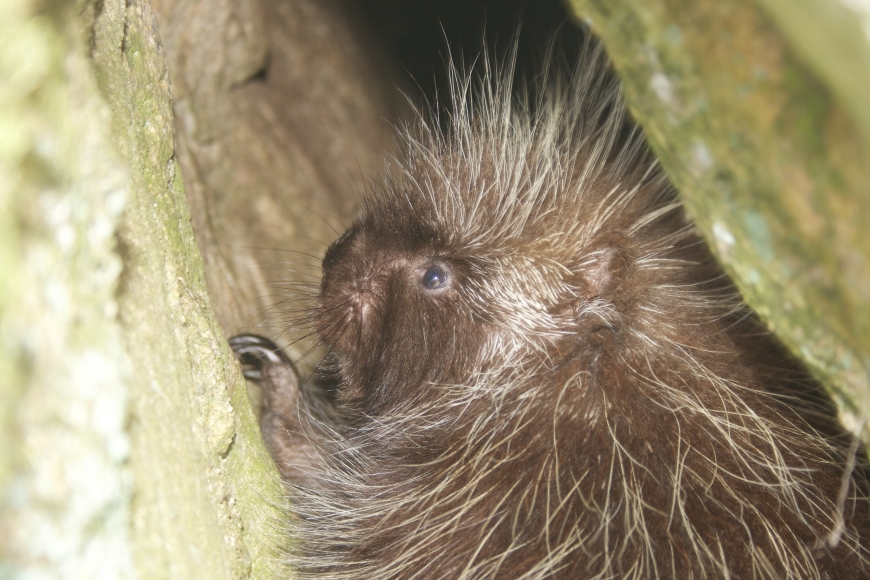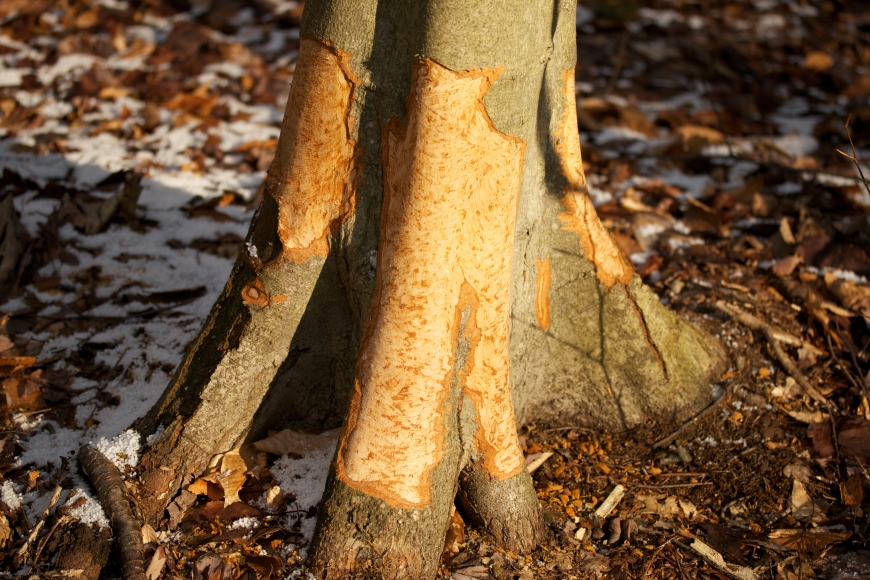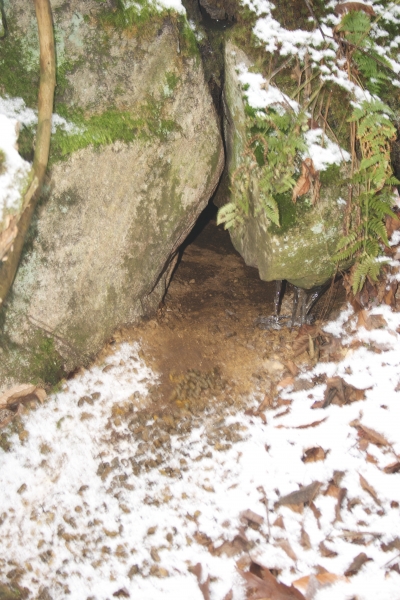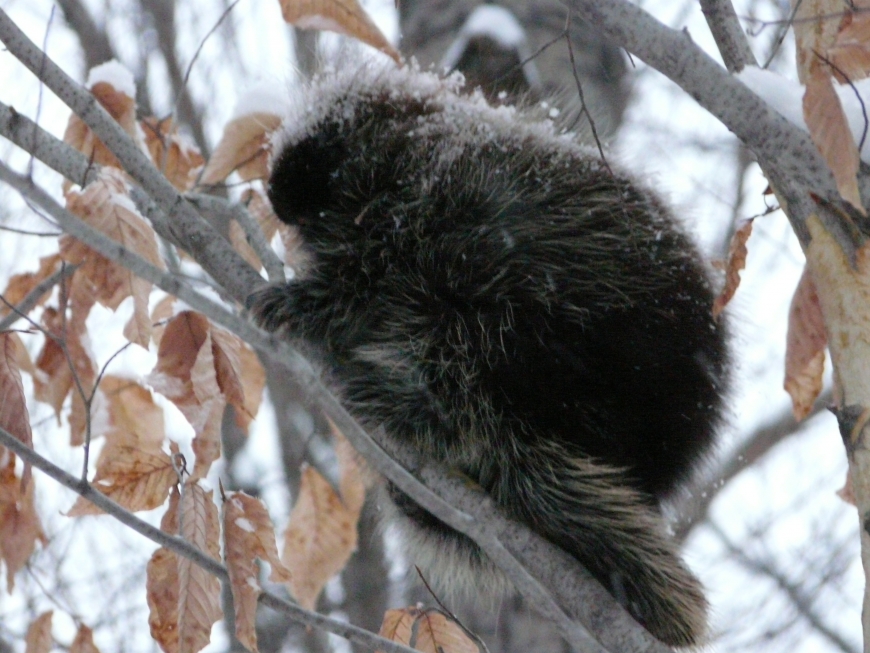



Porcupine damage to a tree trunk.
Entrance to a porcupine den.




Porcupine Trails
What fearless animal has an adorable face, plows snow all winter and has a six-million acre park named after it?
One of 29 species worldwide, the North American porcupine is the largest New World species, growing to 36 inches long and weighing as much as 35 pounds. That makes it the second-largest North American rodent (behind the beaver), but still only half the size of an African crested porcupine which can exceed 60 pounds. It is also the only cold-hardy porcupine, and one of the few that climb trees.
Its name derives from the Latin for “quill pig,” but the Kanien’kehá:ka (Mohawks) call it anêntaks (spelling varies), literally, “bark eater.” This is a less-than-endearing term they once applied to the Algonquins living in, well, the Adirondacks. Unlike Mohawks who even back then were expert agronomists with stores of grain and legumes on hand, Algonquins were hunter-gatherers who, by choice or need, would eat the inner bark of pine, maple, elm and other trees. Eventually the Algonquins moved from the area to points north and east, but the place name remained.
Porkies are active all winter, which is a great time to track them. More or less bullet-shaped, they make effective plows, carving channels through the snow. Since they tend to use the same paths, you can go out after a new snowfall to see which troughs have been cleared in the night. In contrast to most species, our porcupines are not strictly nocturnal, but they do tend to be more active at night.
Porcupine feet are pebbly textured and have no fur, and in deep snow you may also see marks where its tail drags side to side as it waddles. In cases where the claws do not register, its footprint can look (I think) unnervingly like that of a small child. Especially if you’re not really awake yet and have stumbled out to the porch for firewood.
Like all porcupines, ours is covered in hair interspersed with up to 30,000 hollow barbed quills. This accounts for their cavalier attitude toward scary stuff like humans, dogs and, unfortunately, cars. Quills are not missiles—they aren’t launched at a predator, but they will come off at the drop of a hat, provided you drop it on a porcupine. The barbed ends are amazingly good at sticking to skin and other things. If not removed, quills work their way through skin and muscle, and can be fatal depending on their trajectory.
Quills were and are used the world over by indigenous peoples for embroidering. Usually white at the base and fading to brown and then black at the tips, quills have an innate beauty but are often dyed and worked into leather or textile items. In North America, native peoples reportedly threw a blanket over a porcupine and harvested quills that stuck to it. I have taken quills in a similar way from road-killed porkies but with a leather glove.
Most of the time, quills lie flat. When confronted by a predator a porcupine raises them, and keeps its back end to whatever threat has turned up. A porky can lash its eight to ten-inch long tail side to side quite fast, creating a protective radius around itself. Fishers, fierce predators and one of the largest members of the weasel family, are quick enough to outflank a porcupine and kill it by attacking the quill-free head.
Having a cute face only gets you so far in life, and porcupines are despised by many people because bark-eating damages, or even kills, trees. Because they are attracted to salt, they will chew on tool handles, canoe paddles or other items handled by people, which doesn’t thrill the owners of said objects. One year they found a way under my house and chewed on the sub-floor beneath the kitchen. Who knows, maybe decades ago there was a spill of pickle brine that soaked through.
In addition to eating bark of all kinds, they love herbaceous plants, and are in clover in a field of alfalfa or clover. They have a particular weakness for apples. It is impressive how far out on a branch a porcupine will go to get one, seeming to defy gravity.
Porkies usually live in rock crevices and caves, or sometimes in hollow trees. Breeding is in October and December. In May and June, females may birth up to four young, but generally just one. Not only do they have a low birth rate, it takes more than two years for them to fully mature. In the wild, a porcupine may live 17 or 18 years, with the oldest on record being an ancient 28 years.
A former neighbor of mine, long since passed, had as a young man been given an orphan porcupine. He said it made a great pet, and showed off pictures of a full-size porky in his arms. Kids and adults love to watch porcupines, as they are one of the few truly wild animals that will stand for such ogling. If there aren’t any where you live, maybe you can plan a trip this summer to that northern New York State Park. You know, the “Porcupine” Mountains.

